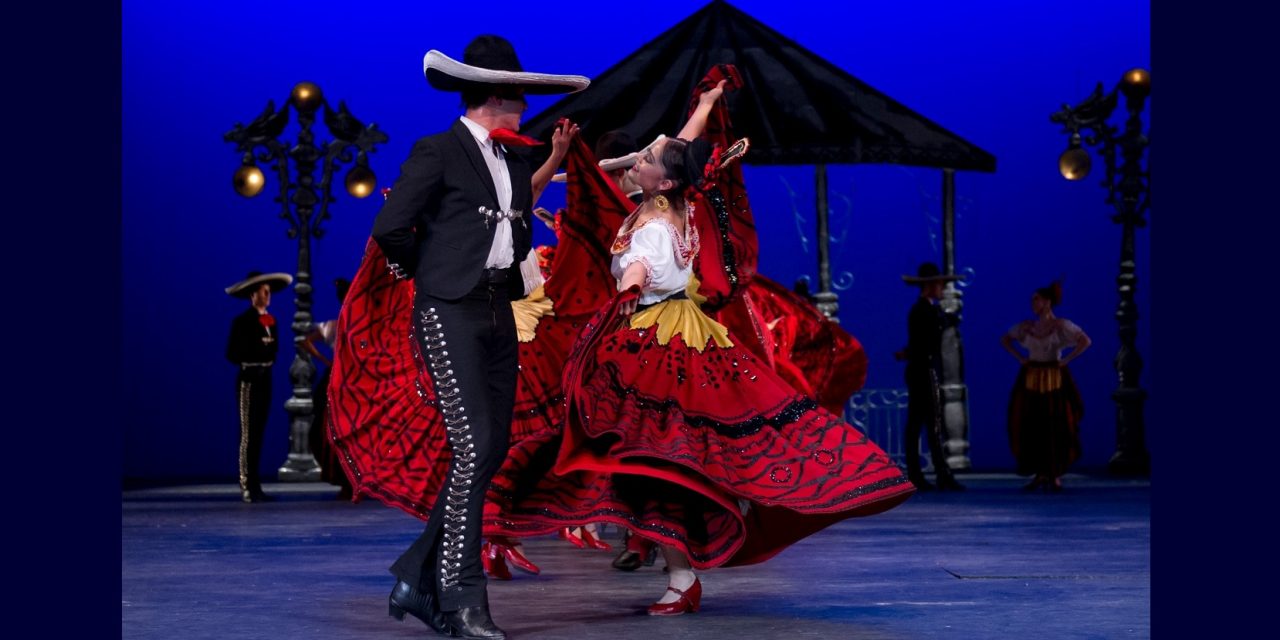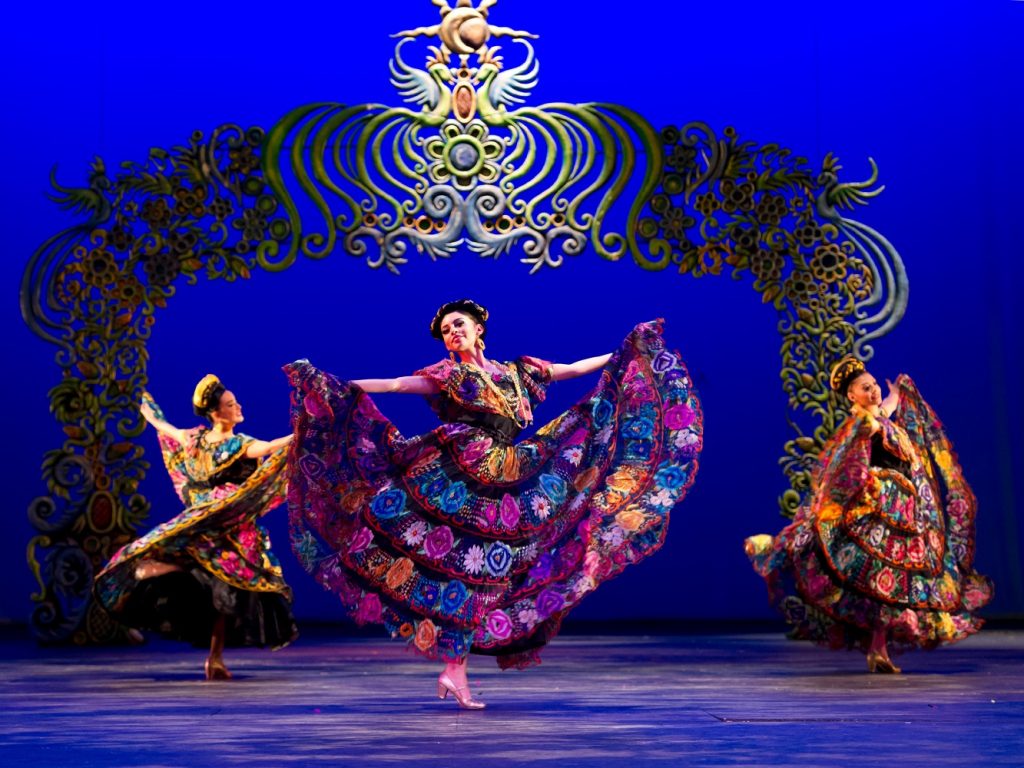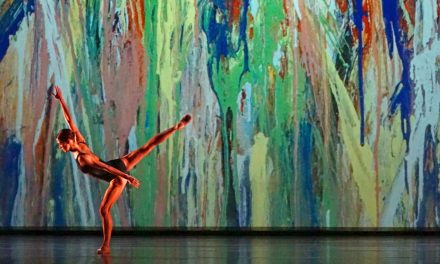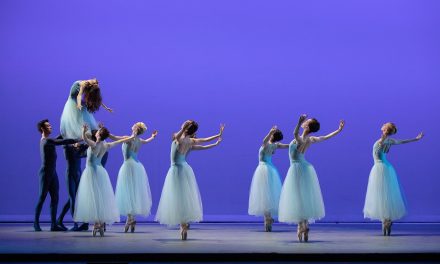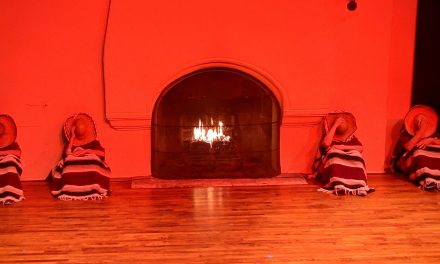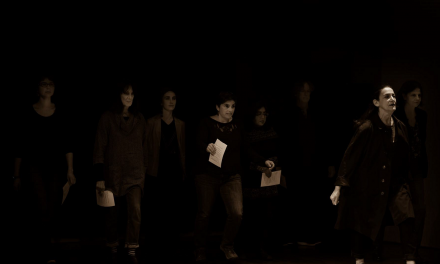It is clear that if you leave the theater with more energy than when you arrived that the performance you attended was above expectation. This was my experience with Ballet Folklórico de México de Amalia Hernández on March 30, 2022 at the Segerstrom Center for the Arts in Costa Mesa, California. The company took the audience on a phenomenal journey through the history of México complete with flawless performances by the dancers and musicians, and gorgeous colorful costumes by Jose Barrios Gomez and Pedro Cedillo Jiménez. Some were traditional, others representative of a specific event. The dance numbers were numerous and each came with its own costumes, props and music. There were no pauses nor was there an intermission, but the entire evening flew by seamlessly.
The only way one could differentiate sections was by the very brief blackouts in between each one. In Aztecas (Hijos del sol), founder Amalia Hernández Navarro provided the audience with a brief look at the Aztec culture and traditional dances. There were warriors, maidens, and priests often wearing authentic looking masks or head pieces. Offerings were made to the gods and wars were fought. Sones Antiguos de Michoacán featured individual solos with each woman dressed in an extraordinarily beautiful dress with multiple layers and colors. The footwork by these lovely women and the men that joined was fast, with hints of ballet movements while jumping, skipping and leaping across and around the stage. Flamenco style shoes in Tarima de Tixtla resounded with the rhythmic footwork that spoke to and awakened internal music of times past. Throughout this fast and intricate dance, the men held one arm behind their backs. The entire cast left no question as to why this particular section, with its colorful costumes and high energy, is considered a favorite of Ballet Folklórico de México’s repertoire.
In La Revolución, the company paid homage to the women who played a decisive role in the Mexican Revolution. The dresses were of earth tones and the women carried rifles and wore bandoliers or sashes holding bullets. There was no fighting or dying, only a sense of unity, purpose and dedication to their country. La Charreada ushered in the 1800s with rhythms and costumes that reflected the influence of Europe. The dancers worked more in pairs and there was a bit of rivalry for one woman’s attention. This moved into a section with the men wearing all black trimmed in silver studs. A man performed breath taking lasso feats joined by a woman who became the center of his attention ending with repeated embraces. A larger similarly dressed group joins them and a social dance became what I dubbed “The Kiss” because there was a lot of that going on.
At this point I stopped trying to keep track of what section we were in and concentrated on watching. Beautiful women in the most amazing white dresses that became integral in the movement stunned us with their dancing, footwork and patterns. Men with white costumes and red bows at their neck increased the rhythmic and special complexities. Using only their feet, two dancers tie a large bow with a long red sash, symbolizing their love for one another.
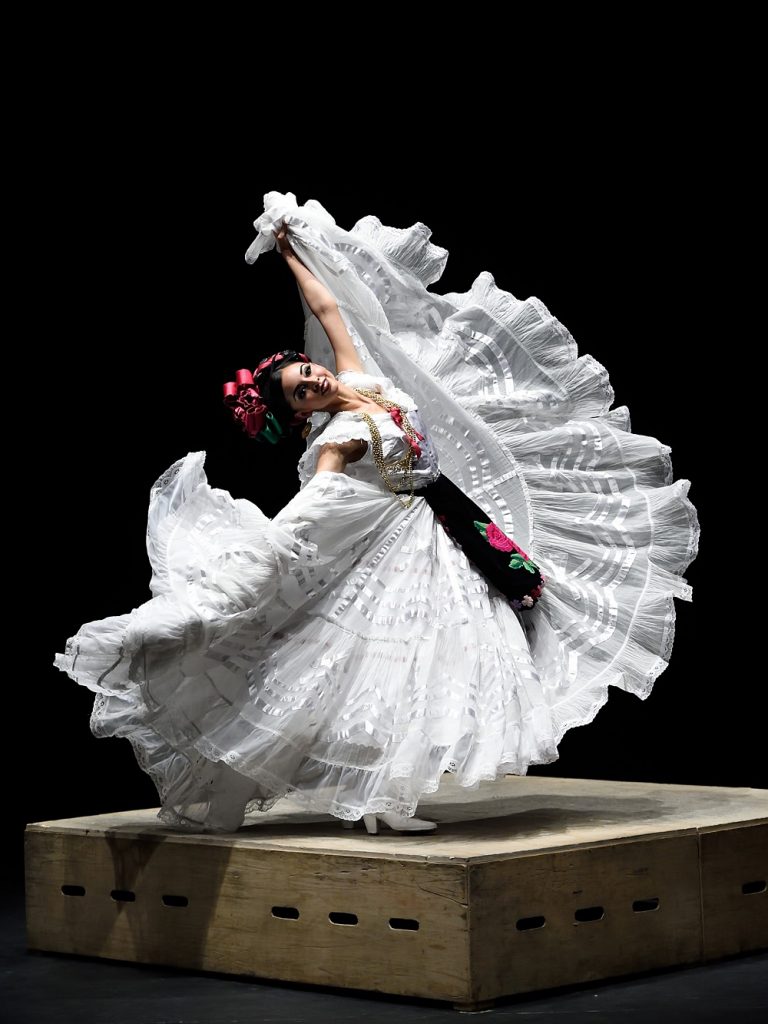
Ballet Folklórico de México de Amalia Hernández – Fiesta en Tlacotalpan – Photo courtesy of The Segerstrom Center
Satan appeared in a red costume, long tail and carrying a forked spear and humor took over the stage. Costumes representing different animals and creatures appeared, battled and Satan tempts a woman seen only from behind wearing a long blue veil. When she finally turns around, her mask and costume reflected those seen at Día de los Muertos, or Day of the Dead.
One highlight of this extraordinary evening was the incredible performance by the 11 member ranchera band, who had played magnificently throughout the evening but who were now featured alone onstage. I counted 1 singer, 6 violinists, 2 trumpeters, 1 guitarist and 1 bass guitar player. I wanted them to go on and on.
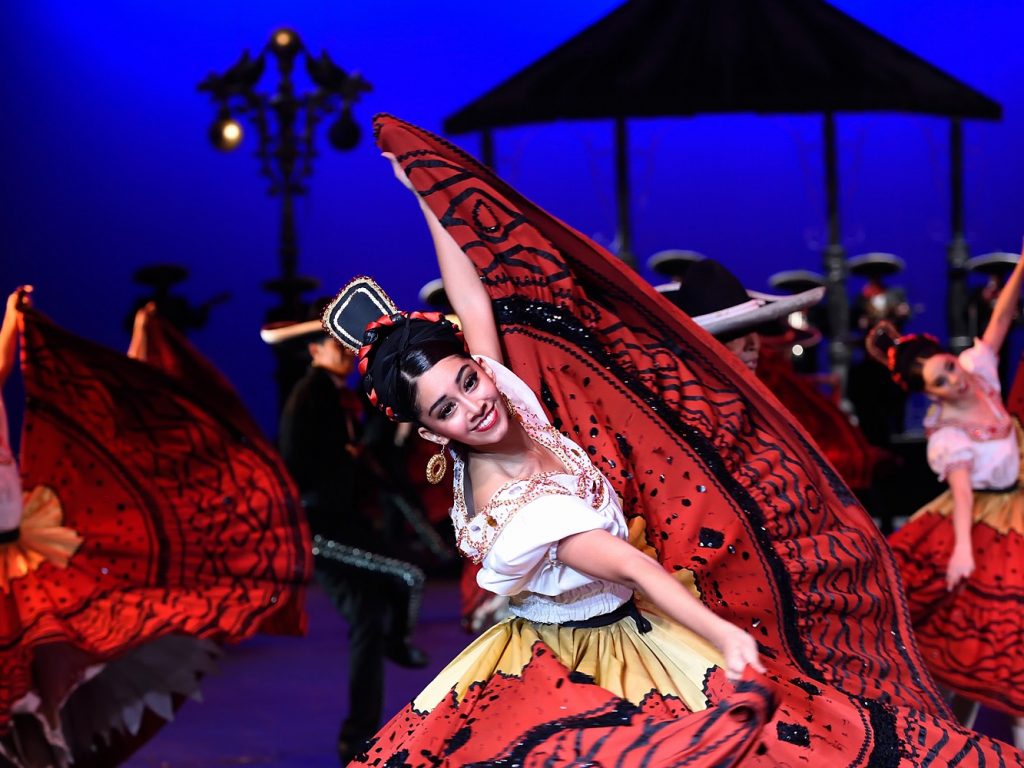
Ballet Folklórico de México de Amalia Hernández – Fiesta en Jalisco – Photo courtesy of The Music Center
The evening ended with an elaborate finale of colorful costumes, intricate patterns of complex patterns with 12 couples weaving in and out of each other while they spun, embraced and executed flamenco style footwork. The audience did not want to let this company leave and brought them back for several encores.
The company performed in The Renee and Henry Segerstrom Concert Hall and its stage was too small for this very large cast, and there was only one entrance on either side of the stage. Throughout the entire evening, however, these professional dancers never once missed a step, tripped or collided with anyone else. This is an amazing company and I hope that the Segerstrom Center brings them back soon and presents them on the main stage for more than one performance.
The cast of dancers in Ballet Folklórico de México de Amalia Hernández were: Ariana Cavett, Ernesto Alejandro Arellano Ruiz, Norma Lorena Fernández Romero, Ricardo Alejandro Barranco Omaña, Miriam Andrea Flores Osnaya, Abraham Bravo Ruiz, Alejandra Itzel Garcia Alejandre, José Issac Garcia Marin, Esmeralda Jazmin Hernández Fierros, Edson Jair González Gonzaga, Andrea Jaime Villanueva, Adrián Rogelio Hernández Caballero, Sofia de Jesús Larrañaga Castillo, Aaron Zalahui Hernández Martinez, Arcelia Danae López Lara, Tonatiuh Ricardo Hernández Martinez, Mariant Monserrat Martinez Vázquez, Gustavo Lemus Lemus, Laura Victoria Rea Paulino, Daniel Adolfo Rodriguez, Jessica Alejandra Resendiz Rodriguez, Juan Francisco Rodriguez Torreblanca, Adriana Sánchez Ramirez, José David Rosas Andrade, Sofia Segura, Oscar Yael Tlatelpa Morales, Ana Paola Zamacona Licona, Jorge Torres Chávez, and Marco Antonio Aguirre Macias.
The musicians included: Miguel Aguilar Salas, José Medina Ramos, Javier Camacho Contreras, Julio Cesar Mora Nieto, Oscar Uriel Canul Tec, Esteban Salinas Cruz, Raúl Gavia Rios, Gilberto Salinas Cruz, Miguel González Nerey, Jesús Salinas Cruz, Wlfred Raymundo May Pech, Adib Wuilliams Toledano Rescalvo, Hector Medina Ramos, Catarino Torres Contreras, and Humberto Medina Ramos.
The wonderful lighting in a space dominated by the very large organ pipes was by Roberto Carlos Arellano Ramos. The General Director was Salvador López López and the Artistic Director was Viviana Basanta Hernández.
#####
To learn more about Ballet Folklórico de México de Amalia Hernández, please visit their website.
To learn more about the Segerstrom Center for the Arts, please visit their website.
Written by Jeff Slayton for LA Dance Chronicle.
Featured image: Ballet Folklórico de México de Amalia Hernández – Fiesta en Jalisco – Photo courtesy of The Segerstrom Center

